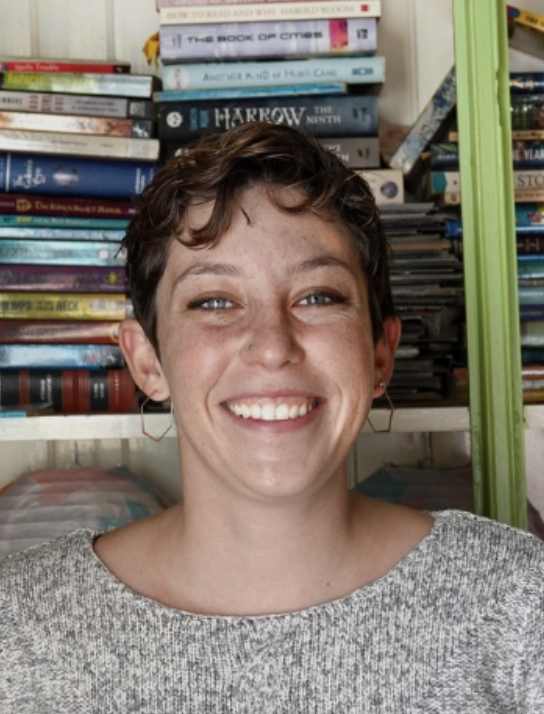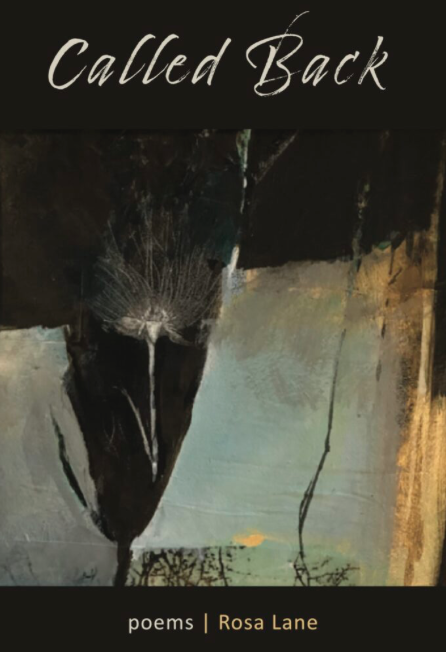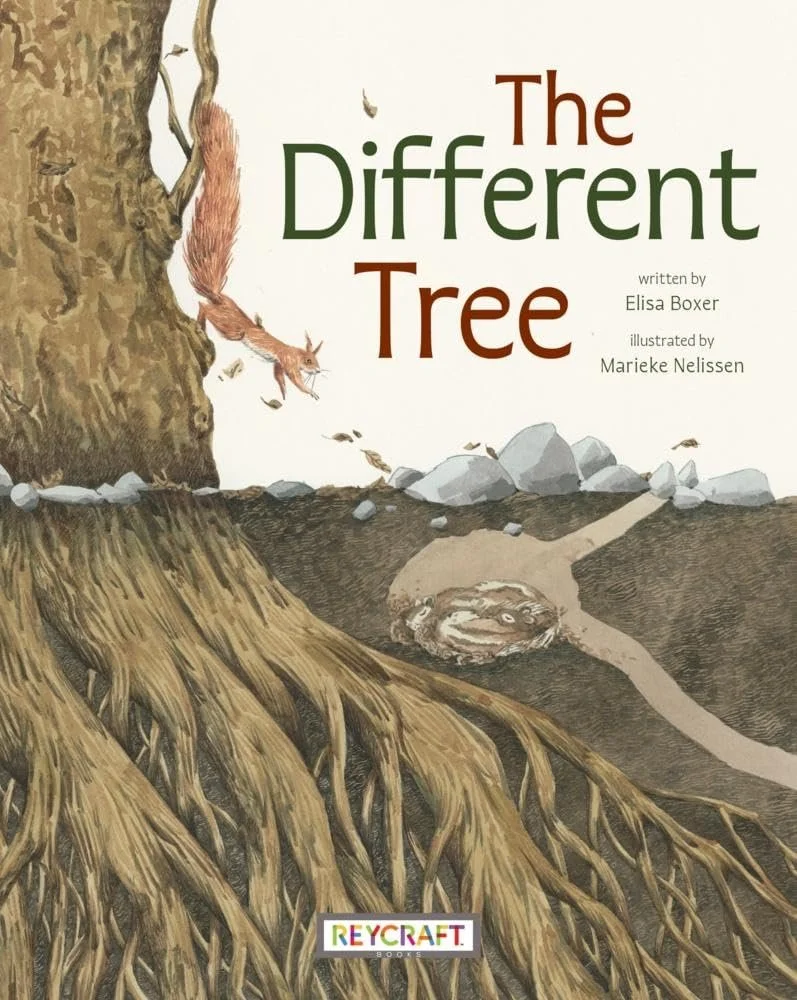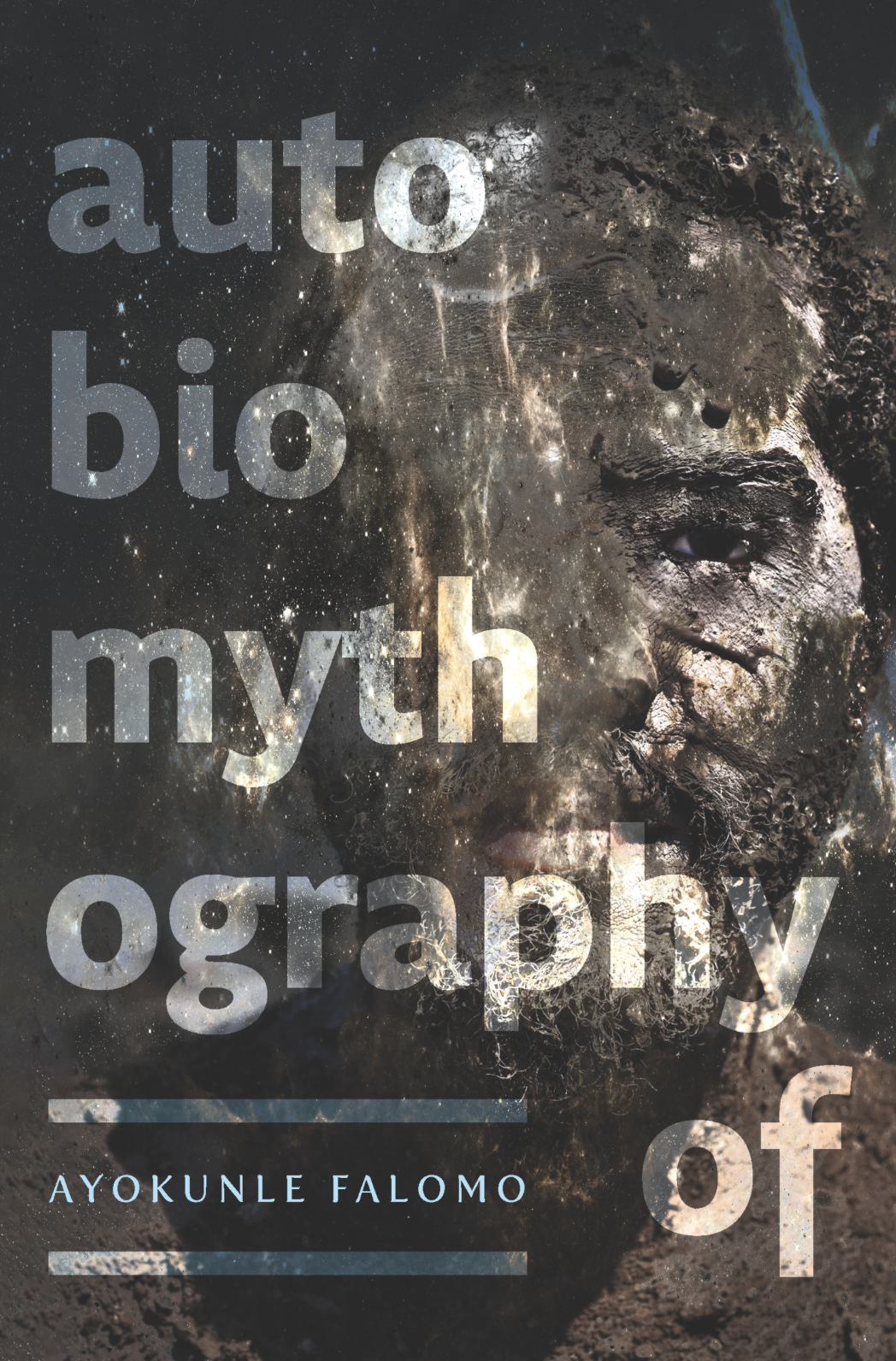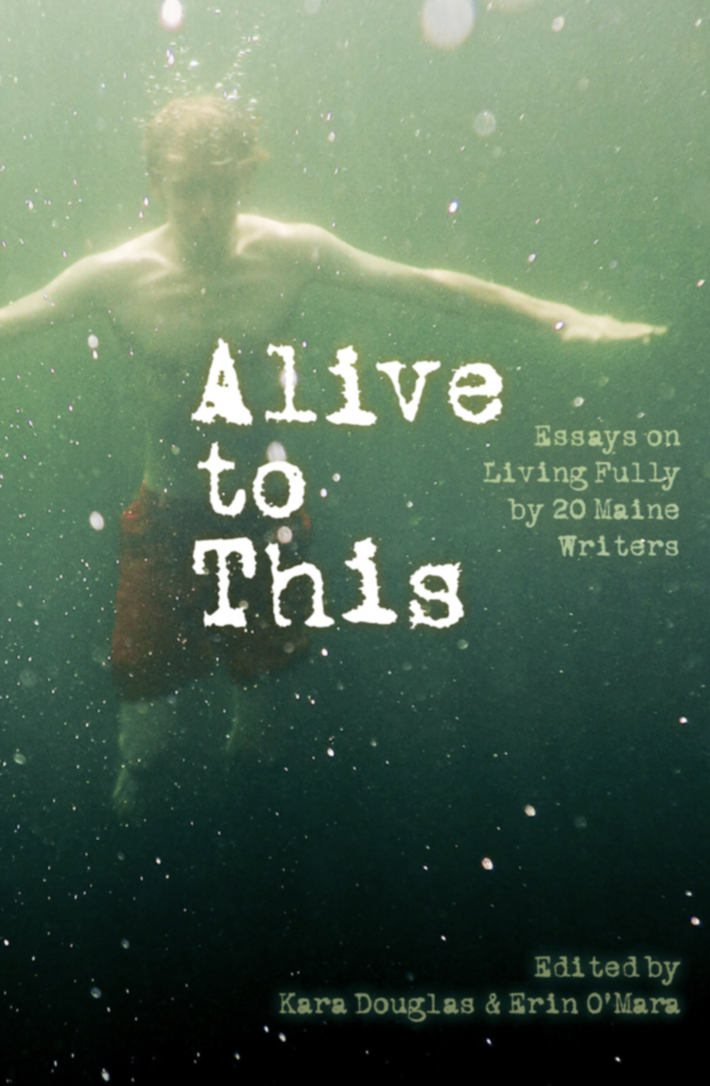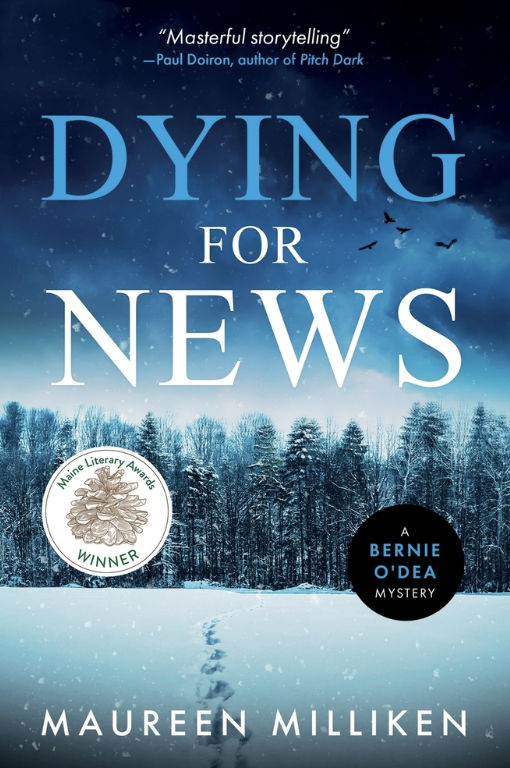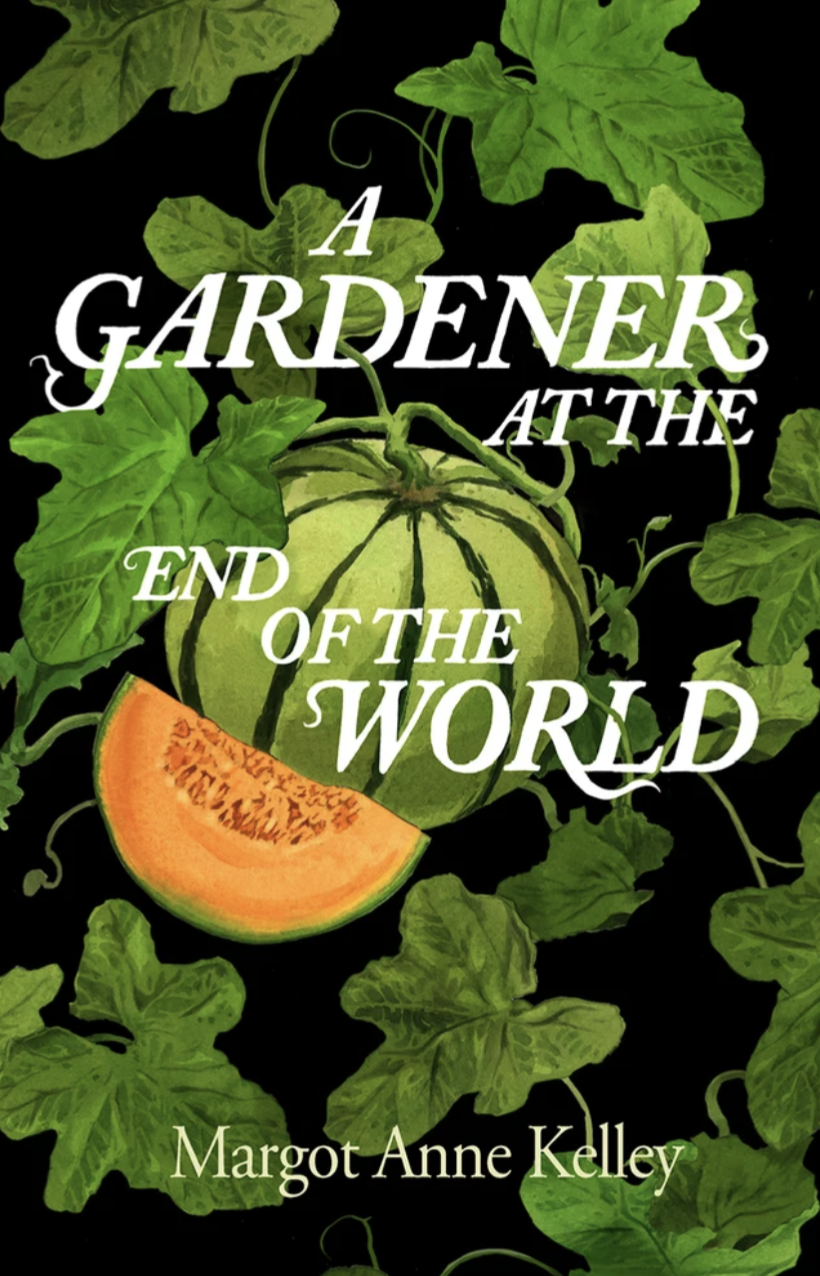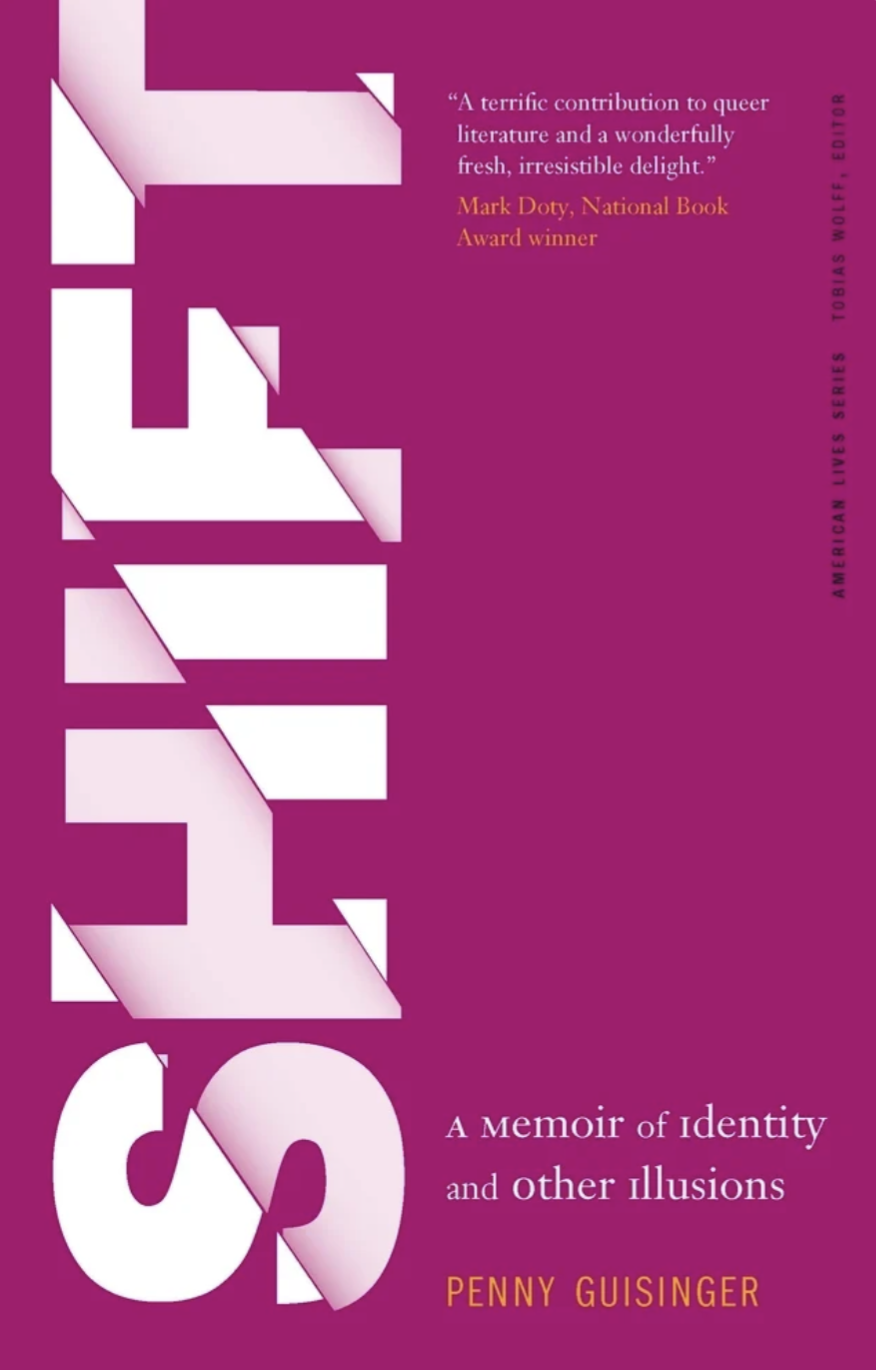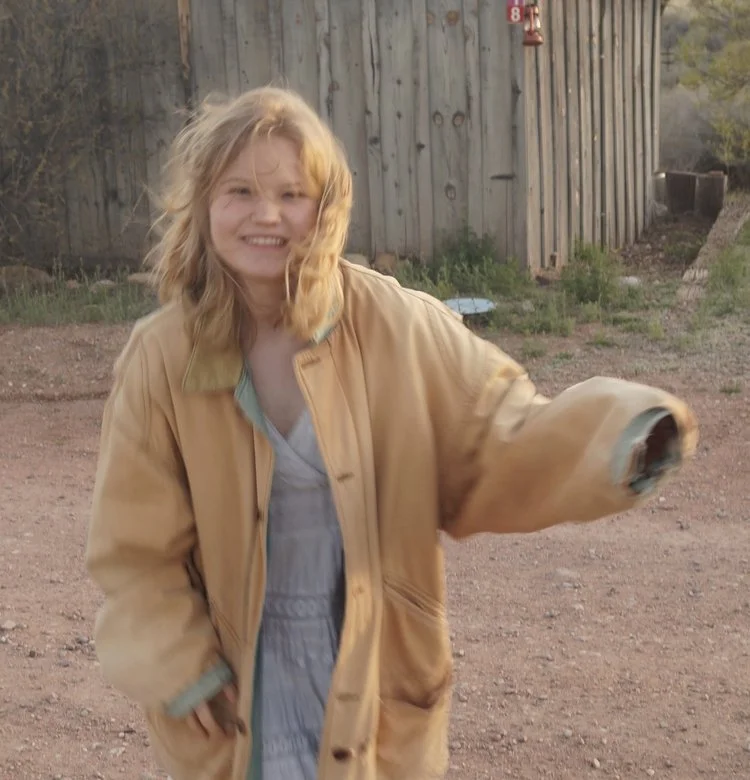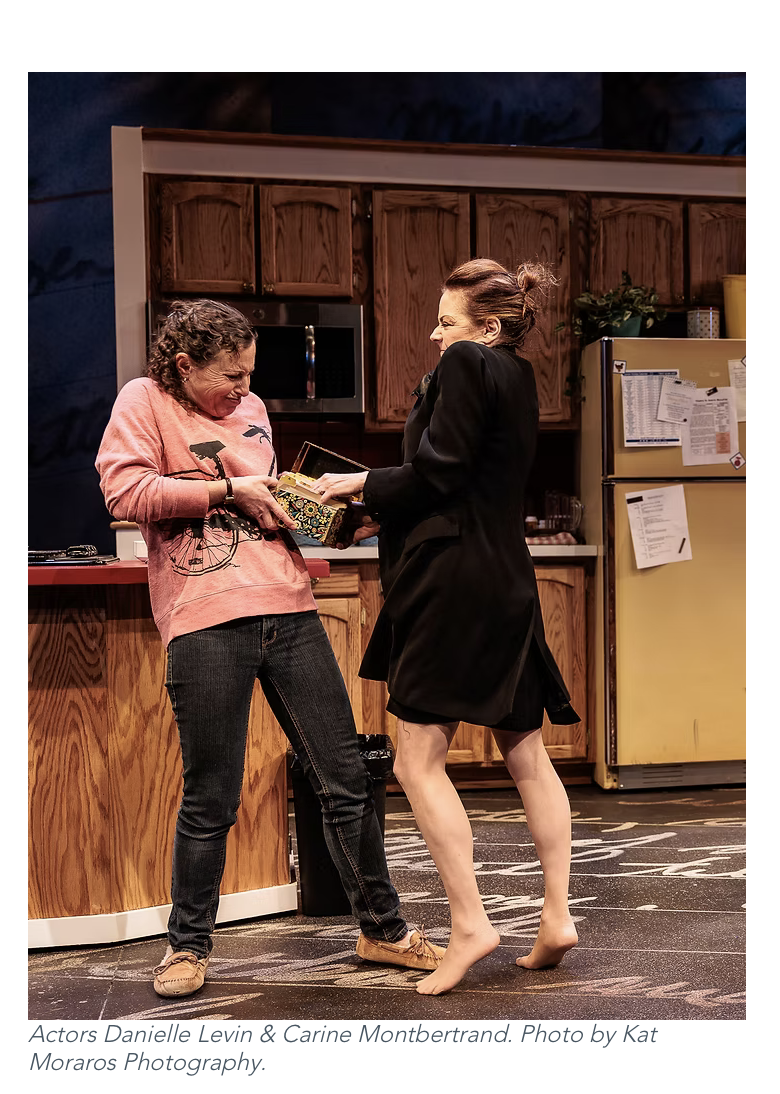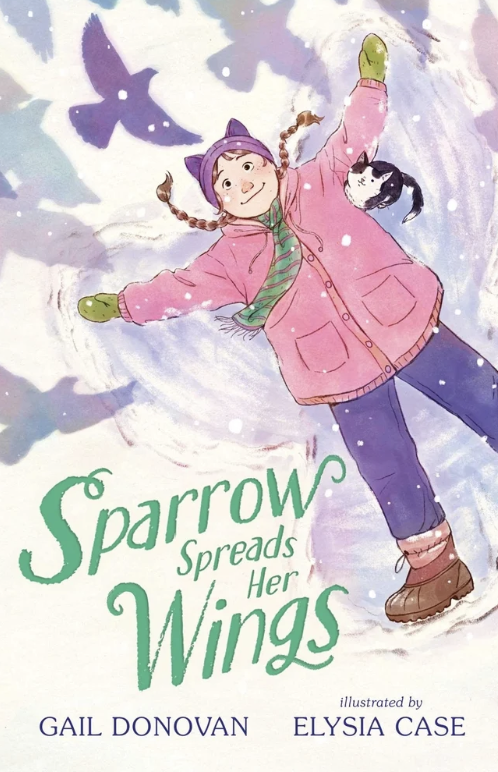2025 MLA Interviews
Short Works Award for Poetry
“i dream my gender a thousand shades of green and Other Poems”
Jude Marx
For you, what is the value of poetry?
Since childhood, writing has been a way for me to process my experiences and the world. I believe poetry can be an integral part of our societal reckoning and the building of resilient communities. It helps us face history, the present, and ourselves, as well as imagine a future. Poetry as an art form is about breaking the rules and boundaries; it is limitless and powerful.
What did you discover about yourself while writing these poems?
Some of the poems in this selection were the first place I voiced to myself my trans/nonbinary identity. Writing is a place where I access truths about myself and the world. Through revising these poems, I came to more deeply understand the ways in which the landscapes I have lived in (from the desert to the ocean) and my own healing processes have shaped who I am today.
What do you believe makes your writing unique?
My writing is a testament to the inspiration around me and the lineage of poets that have come before me. My poems reckon with the necessary and challenging project of acknowledging our most authentic selves in a society that tries to erase us. The shapes, images, rhythms, and structures of my poems live in the liminal spaces of my identity. As a queer, nonbinary, multilingual person, my poetry gives voice to and embodies the breakage of rules and boundaries.
What inspired you to divide your book into these sections the way that you did?
I love this question. Each poem in Called Back is in conversation, not only with its Dickinson epigraph/s, but also with its adjacent and nearby poems, and sections play a part in this dialogue. To back up a bit, the intent of Called Back, the last two words Dickinson wrote, is to restore queer voice to a reimagined Dickinson where previously she and her work were muted and literally erased. At junctures when this poetic and restorative dialogue found pause, a soft turn, or topical shift, sections formed. To find conversational interactivity and sectional interludes, I first laid out all the poems on the living room floor. I then looked for poem-to-poem interchanges that sparked or where one poem seeped into another. Poems began to group organically along four lines of dialogue: 1) queer love and otherness; 2) talking back to the socioreligious context; 3) loss and death; and 4) queer defiance, resilience, and agency. Rather than identify each section with a specific colloquy, I wanted the poems to flow with minimal interruption, to take a breath in between sections otherwise left nameless, and to coalesce wholly and holistically, cover to cover, as one might traverse telling/s over tea.
What do you enjoy most about this type of poetry and how you allow it to flow from Dickinson’s work?
I often write poems in the I-voice, but not in the imagined voice of a specific historical figure especially in the voice of one of our greatest American poets, Emily Dickinson. This type of persona poem was new to me. In the beginning, writing in the voice of a dead poet was more hurdle than joy. I was frightened by it. Yet, the emotion I felt about the denial and blatant erasure of Dickinson’s LGBTQ+ dimensions fueled urgency and my willingness to take the risk. I also wasn’t the first person to write in the persona of Dickinson. Lucie Brock-Broido had done so before me in her poetry collection, The Master Letters (1995). Such an appropriation meant reading and rereading Dickinson’s 1789 poems sometimes out loud as well as her letters particularly the 250+ letters she wrote to her sister-in-law, Susan Huntington Dickinson, her core love; examining every piece of scholarly research I could get my hands on, especially those Dickinson scholars whose research spoke directly to Dickinson’s homoeroticism; and studying nineteenth-century Amherst—its geography and culture. I was driven and captivated by connecting the dots. Initially, my journey into the LGBTQ+ dimensions of Dickinson was personal and took the form of private journal notes never expected to see the light of day. Journal notes morphed into first person entries as if I was writing in a diary. After a year or so, the writing began to take on poetic elements in the form of short lines, line breaks, and metaphoric expression. I did find joy in my five-year odyssey with Dickinson, but such enjoyment was rare amidst the urgency, drivenness, and even anger that I felt toward the denial, iconic/homophobic construction and blatant straightwashing that I found during my research of Dickinson. I would say that the most joy of this poetic process came at the stage of being in queer and poetic conversation with Dickinson as if she sat across the room and certainly now with how well Called Back has been received and acknowledged.
What does your writing process look like?
My writing process for Called Back, as above described, differed from my usual writing process. More typically my writing process looks like this: Being a morning person, I am up between 4 and 5 AM. The house is quiet. Everything feels fresh. Life-as-usual has not yet taken hold. Poetry writing for me comes from the other side of life, a psychic field I have to make my way to. In fact, I have to cross a threshold or break through a membrane to get there, which is the most “here” I know. Sometimes I engage other poets to usher me into this energized and electric terrain. I keep these companions and their books within reach at my side table next to my writing place in the sunroom. Sometimes the morning fog or mist will take me there, or a cardinal’s morning call. Once in the poetry world, I fish and write—the more nonsensical, illogical, nonlinear, and messy all the better. My “Sharpie” fine tip pen scribbles all over the page hardly ever top to bottom or left to right. I have no preconceived ideas on what will come or any hopes or expectations. I consider those thoughts saboteurs from the life-as-usual side. I stay open and welcome anything. I just keep writing from what feels like a mysterious field in continuous discovery because this mysterious field is never the same. The next stage of poem-making comes with finding threads and shreds in the morning writing that cluster towards something. I may not know what. The stages of (re)vision begin. One of the first elements I look for is the volta, the turn, in the early formative poem. If it’s not there, I know I must search for it and allow it. For me, the turn, this point of change in the poem, is what gives it meaning—its reason to be. Once I have it, and you know when you got it, I let the turn reverberate back through the draft poem. Sometimes finding the turn tells me what the poem is about. I adjust from there, maybe I “up- the-ante,” or compress or intensify through tension. If I am lucky this will be a light touch, but this is rare. Even more rare is when a volta arrives first, and I have to let it hover and haunt while I write my way to it or from it. This might take months or years. In the final stages of revision, I back myself out of the poem as its sole inhabitant so that others have the possibility of habitation for themselves for reasons and understandings I will have no investment in. Maybe it is because of being an architect that I view a poem as a potential place for others to visit or live in—a place with its own entry portals. Is a poem ever finished? No. For me, the poem is completed by its reader and/or its audience. My job is to remove myself and get out of its way. That is when the poem opens its doors on its own terms, ready to seek a future and whatever presence or place it might have beyond me. I let it go.
From illustrator, Marieke Nelissen:
I can only say that I hope that our book will make children look deeper at nature, but also at themselves and at each other. There is usually no straight answer to why we do something or why we react in a certain way. So doubting and asking questions is a good way to self-knowledge and knowledge in general. Once you know that there is more to discover under the top layer, it will enrich your life.
The following were answered by Elisa Boxer:
What do you hope children learn from The Different Tree?
I hope they learn to trust themselves. I think we all have those moments where we doubt ourselves, “should” ourselves, or compare ourselves to the people around us and wonder whether we’re on the right track. The book is based on an actual oak tree in my yard. Every fall, I would watch this tree hold onto its dead leaves long after the other trees had let their leaves go. Something inside of me could always relate. I take my time letting go too ;) I started thinking about this tree as the main character in a children’s book – a work of fiction, at first. But when I dove into research, I came across a natural phenomenon called marcescence, which is when certain tree species retain their dead leaves well past autumn. I won’t spoil the ending, but this delayed release of leaves happens for the most beautiful of reasons. Nature doesn’t make mistakes. But in the book, the tree doesn’t realize this. She’s full of self-doubt and self-judgment about why the heck she hasn’t let go yet. Until the end. So, I hope children see themselves reflected in this tree. I hope they remember to follow their natural rhythm, go at their own pace, and trust their own timeline, even if it looks different from someone else’s.
What is your process for writing children’s books like this one?
Up until The Different Tree, all of my books had been nonfiction. This blend of fiction and nonfiction was new for me. But the process was similar. I started with an idea that tugged at my heart. I’ve always been fascinated by how human conditions and behaviors are reflected in the natural world, so I knew early on that this tree would make a great protagonist. I just had to figure out the narrative arc. That came through a combination of research and meditation. I read books and articles. I interviewed experts. I thought about the emotional takeaways for young readers. I felt into the energy of my main character. I experimented with different points of view. I created an outline, let it percolate, and revised it dozens of times over the course of about a year. It was actually in the winter of 2022, when this particular oak outside my window was still hanging onto her leaves, that the final manuscript came together. It found the perfect home at Reycraft Books, where editor Sunia Apte chose Marieke Nelissen as the illustrator. And I am so glad! The illustrations are just breathtaking.
What did you learn about yourself while writing The Different Tree?
I generally find that I write the book that I need to read at that particular time in my life. That was definitely the case here. I call this book a love letter to my fellow self-doubters, because although I always intend to honor my intuition and follow what feels right for me, I often struggle to stay true to that in the face of real or perceived outside pressure. Writing this book helped me trust myself. Illustrator Marieke Nelissen said “I hope that our book will make children look deeper at nature, but also at themselves and at each other.” I think that’s such a beautiful way to put it. Every time I talk about this book with kids, I’m reminded of how deeply I resonated with that oak tree. I’m reminded of how important it is to follow nature’s lead. And I am reminded that everything really does have its own cycles and seasons. We just have to trust ours.
Charlene Vanderslice attended UMASS, the Academy Modern, and studied Hatha and Raja Yoga in Boston, Meditation in Tibet and Feng Shui in Hong Kong. She is a graduate of the Feng Shui Institute of America and a professional member of Feng Shui International. She sailed around the world twice, climbed the Himalayas, completed safaris in Africa, and absorbed the customs and religions resident in the countries she visited. While living in Pakistan, she taught English to women behind the veil. She used her artistic talent to paint multiple scenes related to these travels. Her professional career included a stint modeling sportswear for Nike, teaching Yoga overseas, various management roles with Georgia Pacific and a rewarding real estate career with William Pitt/Sotheby’s in Darien, CT. She developed and taught the “Power or Place,” based on Feng Shui, as a critical element of her real estate practice. She was a Reiki Master and a Therapeutic Touch healer for many fortunate clients. In 2004, she retired to the coast of Maine. Her beach stone labyrinth there is listed for visitations by the Labyrinth Society of which she was a member. She became an ocean advocate, changed her name to “Sea” and painted all varieties of underwater life with the proceeds going to the Maine Marine Environmental Research Institute to support “save the ocean” projects. She always found time to pursue her passion for the outdoors- skiing, dancing, beach walks, tennis, boating, snorkeling with sea turtles and especially golf. Charlene passed away from Alzheimer’s disease in 2021.
Her husband, Wilbur, answered the following questions:
What do you believe makes Charlene’s writing unique?
Charlene’s writing is unique because she was unique. In life, she had experiences on a world scale that very few folks can match. She was also an avid reader; - a book a week? She was also smart, having demonstrated an IQ of 136 based on 7th grade scores. Charlene was a student of The Ozark Institute of Arkansas that teaches “using one’s mind has the potential to change lives” and she practiced this in real life. I was witness to two such examples. The first: Charlene set up an experiment to see if mind power could have an impact on plants. Two identical flowerpots with seeds were set in a sun facing window. They were watered, fertilized with equally measured amounts at the same times and pot locations were exchanged daily. As an engineer, I oversaw these treatments to ensure there was no bias by Charlene in how these pots were physically managed. Once a day Charlene would meditate and offer a prayer for the seeds in the pot with a unique mark. Several days later, the marked pot showed sprouts, some 3-4 days sooner than the unmarked pot. Similar improvements over the next several weeks favored the marked pot, in terms of plant size, color and apparent physical health. This experiment is captured in TMS. The second: While moving kitchen gear into our new home in Maine, Charlene experienced intense back pain. Following a trip to the ER in Rockport, the ER doctor told me that he had eventually given Charlene the maximum dose of morphine, that it had no effect on reducing her pain and that could offer no further approaches to reduce her pain. I entered Charlene’s room and eventually told her “You did this to yourself. You can heal your yourself.” To this day, I remember those words. Some 15-20 minutes later, Charlene exited her room - pain free. That evening, we had dinner at a local restaurant and noticed the ER doctor and his wife. The net of our conversation was that he had never experienced that kind of recovery and that Charlene possessed unique healing capabilities.
How did this book come to be?
Charlene Vanderslice and I retired to a waterfront property in Mid-coast Maine in 2003. Several years later, she told me that she was writing a book, (her first attempt) and, though incomplete, was sending it to a known consultant on book writing in New York city for comments. I remember her telling me that his response went something like “too many genres and need to focus on one.” That was the last time I heard from her about the book. She passed from Alzheimer’s in the summer of 2021, and in going through her belongings I found a manuscript titled THE ISIS AMULET that I believed to be what she had sent to that consultant. In reading it, some 180 pages in 8”x11” in format. I had two thoughts; 1: The writings were representations of her; her experiences, what she believed in, people she knew, places she had been. And 2: I felt compelled to see it published in book form, if for no other reason than as a gift to our two granddaughters. The latter presented two problems. The manuscript was incomplete, and I was totally inexperienced in book writing. In asking my daughter-in-law for ideas on how to proceed, she mentioned that Charlene had given her a manuscript to read sone dozen years earlier, that it was complete, was better than most books she had read, and she still had it. Titled THE MERMAID STONE, this turned out to be a perfect match to text in THE ISIS AMULET other than changing references to the Isis amulet to the mermaid stone. It also doubled in volume to where the published version was some 519 pages in 6”x 9” format.
In going forward, I eventually contacted Maine Authors Publishers on any interest as a working partner. Their positive response, following their reading assessment, eventually led to publication in early 2024. That journey, initially, included an assessment by Andy Beahrs, an author of several books and a friend of Charlene’s son. While he offered several suggestions, the only one I went with was the reversal of Chapter 1 with Chapter 2. This reinforced the conflict between good and evil earlier in the text. The rest is all Charlene’s. One requirement I gave to MAP was to find a way to include a photo I had taken of Charlene shortly after we moved into our retirement home in the village of Clarke Island. This captures Charlene searching our waterfront beach area- her daily ritual- for bits of sea glass or unique seashells. (This waterfront is integrated into TMS multiple times.) Michelle Hodgdon, the Graphic Designer for MAP, discovered a gold pendant and found a way to incorporate that photo image into the center stone for the book cover design. I could not have been happier. Having TMS published was a labor of love - a tribute to a woman I admired for her extraordinary and creative talents. I am delighted with the result.
What is your favorite form of poetry to write?
I think it’s hard to choose, considering the amount of freedom poetry offers in terms of formal choices, but if I were to choose, it’d be the epistolary. I think I can attribute this choice to my experience in spoken word/slam poetry where the awareness of an audience is almost, if not entirely, inescapable. If it is a burden, it is a burden I surely welcome. I imagine every poem has an audience, whether real or imagined. By audience, I do not exactly mean the reader, but rather that the poem is in conversation with something or someone, even if sometimes that someone is myself.
What was the most challenging part about creating Autobiomythography of?
The most challenging part of writing the book was figuring out how to communicate my allegiance to Truth over mere facts. Though facts are important, they do not account for the whole of any story. “Tell all the truth but tell it slant” is what Dickinson admonished, and difficult as it was, I very much wanted to be faithful to that.
Which other authors inspire your work and why?
The book itself, and especially the notes section, is filled to the brim with references to authors, thinkers, and artists that have inspired and continue to inspire my work. Some names include Lucille Clifton, Audre Lorde, James Baldwin, among others. From these three in particular, I have learned the capaciousness of what we call self, whatever that ends up looking like, and also, the bravery to (re)claim and shape that self.
Anthology
Alive to This: Essays on Living Fully by 20 Maine Writers
Edited by Kara Douglas and Erin O’Mara
(Answered from Kara's kitchen where much of the work on the anthology took place)
What did you hope to capture in this anthology? When the life's circumstances land in such a way that something within us opens afresh, connecting us to an aliveness that often lies dormant within, it changes us; our perspectives, how we experience interconnectedness and how we move forward. In this anthology, we hoped to capture the magic and challenges and payoffs of life — the diverse array of things that make us feel alive. We wanted to create the space for people to share what moves them and what creates a deep sense of connection to themselves, to others and the world around them. We wanted to capture the human condition, complete with the necessary underlying hope.
What was the selection/compilation process like? The selection process was sometimes chaotic, even confusing. We had to figure out how incredible pieces fit with our vision and in that process, the pieces gave clarity to our vision and made it stronger. We relied on each other and on the expertise at Littoral Books. We're grateful to all who took the time to submit their work and their truth about what makes them feel alive.
What do you think makes Alive to This unique? The theme invited an incredible range of responses and allowed writers to share transformative moments in their interpretation of the question. We're lucky to have established writers and writers published for the first time and that mix supports the theme and makes the book stronger. We think the feeling of being alive is deeply personal and that brings a unique depth and breadth to this anthology.
Youth Fiction
“Catch and Release”
Sylvia Guarna
What inspired you to write "Catch and Release"?
I wrote the story originally for my English class. The weekend before I started writing, I went to New York City for the first time. While I was there, I had an interesting thought—a lot of what I was so amazed by in the city was boring or mundane to someone who had lived there their whole life. I ended up setting the story in New York, and one of the major themes was how new perspectives can completely change how you see something you’ve become accustomed to.
Who is your biggest inspiration in the literary world?
I think that some of my biggest influences are writers like Donna Tartt who mostly move their stories through character driven narrative and dialogue. While I’m not sure how much it transfers over into my writing, I really enjoy writing stories that revolve around characters rather than plot. In addition, I’m a big fan of Haruki Murakami’s sort of “matter of fact” writing style, which I think I emulate a bit in my writing.
What was your greatest challenge while writing this story and how did you overcome it?
I would say that the greatest challenge while writing my story was the conclusion of it. I had developed the themes and the story for so long that I found it really difficult to conclude it in a way that I liked, and something that made the rest of the story feel meaningful. It took a very long time and several drafts to conclude it in a way I was happy with.
What inspired you to write Dying for News?
It’s the fourth book in a series, so the easy answer is that all the previous books inspired it. But the longer answer is that, like all of my books, it was inspired by a lot of things – feelings, incidents, stuff I read in the paper or see on TV, or drive by and wonder about. All of my books have underlying themes of things I feel I need to say, without preaching or hitting readers over the head with. Those themes, many connected to how people relate to each other, are part of the foundation of the book. Probably more so in Dying For News than the three previous ones, since it’s the first one I wrote without a publisher and could fly a little freer as far as character relationships went. The plot itself, as I mentioned earlier, was inspired by a mix of things both big and small that intrigue me or just evolve from something I’ve seen, heard or experienced. My protagonist’s tenant – who may or may not have been responsible for the arson fire that burns the house down at the beginning of the book – was inspired by a tenant I had when I was unemployed a few years ago and had to rent my house out. (Inspired by! Not based on! It’s fiction! Don’t sue me, former tenant.) Many of the smaller crime incidents in the book are inspired by things that I read in my local Maine newspaper, or had happened when I worked for newspapers in Maine and New Hampshire. Some of the bigger crime incidents are things I also read about, or were aware of. For instance, a mayor in Maryland (I think) accidentally left a checkbook that implicated him in fraud in an old filing cabinet. How can you not want to use that? There’s never one big thing that inspires my books, but a lot of things both big and small – incidents, feelings, themes, stuff I need to work out, conversations I overhear, things I read or watch a documentary about – that come together to somehow form a book. If I’m lucky, it’s not a hot mess.
Who was your favorite character to develop and write in this novel?
That’s a hard question to answer. All of my main, recurring, characters are favorites, even the bad ones. One irate reader emailed me asking why I don’t kill of Fergus X. Kelley, a particularly odious and feckless journalist rival of my protagonist Bernadette “Bernie” O’Dea, who owns a weekly newspaper. Why would I kill him off? He adds to the tension and plot, but more importantly for me, he’s so much fun to write. As far as new characters go, I do enjoy the way they kind of pop up and develop on their own, without me even realizing they’re going to be in the book. For instance, Mandy Arsenault, a new officer with the police department, just appeared and immediately developed on the page. Her backstory didn’t get in much, if at all – she was on the U.S. Olympic snowboard team until an injury (or something else) forced her to quit. But I could see her in front of me. Tiny, but strong, smart and determined.
My protagonist comes from a large family, and I’m slowly introducing members into the books. Her brother Tommy shows up in town in this book to keep Bernie in line. I enjoyed making him a counterpoint to Pete, the police chief and Bernie’s romantic partner. I’m from a big family, too, and it’s fun to write sibling interaction. It helps to reveal character, but also adds some humor to the books. Because even though the books are murder mysteries, as a reader I hate reading humorless books and could never write one. Almost all the humor in the books comes from character interaction, obviously. Where else would it?
I also enjoy further developing secondary characters who appeared in previous books, and giving them a bigger role. For instance, Kermit O’Neal, the town’s only defense attorney, became a full-fledged character in Dying For News, and it was really fun to develop him into a voice of reason who helps out Bernie, and also gave me a chance to say some things about the criminal justice system and work in the fact that Maine has a serious defense attorney crisis going on without making the book a boring academic paper. Another secondary character, Natalie Perry, a girl who’s 12 in Dying For News, continues to have a role in helping the mystery get solved. It’s a slippery slope putting kids into adult books, but I try to make them real, as well as relevant to what’s going on. Natalie first appeared as a way to add dimension to the police chief’s character in No News Is Bad News, but over the next two books has become more established as her own character, and always has something to contribute to help solve the mystery. She’s a member of the Passamaquoddy Tribe who lives with her father, who’s white. As someone without her background, I try to take extra care to not step on toes I have no business stepping on, but I also think it’s important that different points of view and places in society are represented in my books. I read works by, talk to, and listen to, people from the different backgrounds I represent to try to present those characters as honestly as possible without making them trite or insulting to the people who know better than I do. I also make sure to add the reactions from the not-always-insightful point of view that I’ve observed from where I sit. I know that’s a lot about character that goes beyond the question that was asked, but the most reaction I get to my books is about the characters. I feel strongly that characters, how they interact and the choices they make, are the foundation of any good mystery plot. More importantly, I don’t want to read a book that doesn’t have characters I can relate to and root for. I’ll stop reading a book where there isn’t one character that I can like, so I’m not going to write a book that doesn’t have characters people can get behind. That probably doesn’t make me “edgy” enough for some readers and critics, but I’ll take the hit. It’s important for people who read my books to like them, obviously. But in the end, I have to write books that I’d want to read, and that come from my head and heart.
What is your view on the value of a novel’s setting, especially one like this?
Dying For News and the previous books in this mystery series would not exist if it weren’t for setting. I grew up in Augusta, and always wanted to write mysteries, and there was never any doubt they would take place in Maine. As I grew into adulthood and read zillions of mysteries, I also vowed that the Maine in my books would be the one I was familiar with and not a caricature of the state or, just as bad, something that could be set anywhere but purported to be Maine. Setting doesn’t just exist as a backdrop, but should shape the circumstances of the plot and the behavior of the characters. One reason my books are set in the western Maine mountains, aside from the fact that it’s such a cool place, is that the setting is perfect for a mystery. It’s remote, cell service isn’t always great – people are forced to interact in a way that’s much different than it is in a more populated setting that has more services. It’s much better for plot in general to not have help a minute away, but it’s also a foundation for how people act and react. Since I grew up in Maine and also worked for more than 30 years at newspapers that covered small towns in rural Maine and New Hampshire, I have a deep familiarity with places just like the one in my book. I work hard to not make my town a collection of standard quirky characters and quaint businesses, but instead to make it a more genuine Maine small town. The relationships and situations that stem from reality make for better character development, plots and overall better books. I want people who live here to read my books and say “yeah, that’s the Maine I know,” and people who have never been here to say, “Ohhhhhh, that’s what Maine’s like.” Without all the murders, of course.
Nonfiction & Recipient of the John N. Cole Award
A Gardener at the End of the World
Margot Anne Kelley
Did you do a great deal of outside research to write A Gardener at the End of the World?
I sure did—a ton, in fact. Sometimes it felt like when I wasn’t working in the garden or doomscrolling about COVID, I was researching. Mostly about plagues and pandemics and the plants that get highlighted in the book.
What did that process look like?
For researching the plagues and pandemics, I read historical accounts and articles from scientific journals. Scientists are still making breakthroughs about what happened hundreds of years ago. They just recently figured out what one of the germs was that explorers brought to the Americas in the early 1600s. It killed many Native Americans, but the Europeans were mostly immune to it. I read about specific pandemics and then figured out what we could glean about our own situation by learning what happened then.
When researching the plants, I wrote down every interesting thing about them that I came across. I knew I wouldn’t include it all, but which details made it into the book would be determined by what month a specific plant had its star turn, and what else was going on in the text for that month. My work table was covered with huge pieces of newsprint that I filled with eleven different colors of Post-it notes so I could keep track of all the material I was juggling.
How did you decide this chronological sort of journaling was the best format for structuring your book?
Although I didn’t know it at the moment, it came early. As soon as the lockdown started, I began keeping a journal about the pandemic. I wasn’t planning this book yet, but I knew we were living through something huge and knew that I’d want to be able to remember details later.
Did you consider any others?
Only in passing. At its heart, the book is about what we can save, and what—no matter how hard we may try—we can’t. So I played with a few other ways of organizing it that would be about saving and losing. And, obviously, it’s about the ways that humans, plants, and germs co-evolved, which is largely a story about how they all migrated. So I also thought about journey metaphors. But those seemed inapt during a year when I literally stayed home almost every day. Plus, the symmetry between that first COVID year and a Maine gardening year was so compelling. Lockdown here started in late March, and the first vaccine received emergency authorization in early December. That period corresponds almost exactly to my gardening season. Farmers start earlier, but our greenhouse isn’t heated, so I wait until late March to start seeds. And most years, I pull the last of our carrots in December. The parallel was so elegant it felt like the perfect form.
What do you hope readers gain from reading this book?
Hope. Seeing the pandemic in the context of other terrible outbreaks helped me figure out what people most need in that kind of crisis—which is solid, trustworthy information and some way to hold on to hope. Gardening itself is always an exercise in hope. Excavating stories from history is also an act of hope—a reclaiming of a part of our shared story that’s at risk of being lost. Plus, it’s a quiet way of showing how important information and context are; nothing is fully itself. Everything is connected. If folks decide to try my stove-top cider recipe, or to save seeds, or to use daffodils and alliums to deter deer, that would be great too.
Memoir & Recipient of the John N. Cole Award
Shift: A Memoir of Identity and Other Illusions
Penny Guisinger
What other authors or activists inspire your work?
I am inspired by anyone who follows their passion by showing up, day after day, to apply themselves. Whether it’s writing, playing an instrument, laying bricks, helping others, defending people’s rights, standing up to power, serving as an educator, raising passionate humans, or performing open heart surgery—whatever it is, if you love it and you do it and you find meaning in it, I find you inspiring. In the realm of writing, I am inspired by anyone who manages to consistently (even a little bit) put themselves in the chair over and over and bang out some sentences, even if (especially if) the sentences aren’t working. To keep showing up in the face of frustration and failure is what dedication looks like to me. It’s not easy. It’s not supposed to be easy. The difficulty is really important. The hardest writing days play a critical role in creating the best work. (It’s true for me, anyway, but I tend to do things the hard way. Mileage may vary for others.)
The titles of each section in Shift are so creative and meaningful, what was your process in choosing them?
I find titles really difficult sometimes. They either show up immediately or I have to go looking with rations and a flashlight. I learned a lot about titles from my friend, the award-winning poet Sarah Carson. If you don’t know her work, you should check it out. A title can be a powerful little engine if you endow it with enough agency to let it do its job, which is to be the warm-up act for the piece or the chapter. I have a soft spot for long titles that do a lot of lifting. Here’s a tip from Matt Bell’s book Refuse to be Done. He advocates for giving a piece (a chapter, a book, whatever) a working title even if you know it’s unlikely to be the forever title. It can help the writer coalesce their thoughts around some central idea. I have found that very effective. My current book-in-progress has had at least four different working titles since I started it. (Maybe file that under The Hard Way to Do Everything?)
What inspired you to share this personal story with the world?
I was talking with a songwriter friend the other day who is writing some very personal material, and he said something like, “The more personal it is, the more universal it becomes.” It’s the best way I’ve heard that stated. We tell stories to connect with others and make meaning from the world. Why tell my story at all if I’m not going to really tell it? When I’m writing something personal, and I’m holding back, I find that I get more precious and more protective of the material. But when I go deeper and strike a particular level of intimacy, the material becomes more universal and it’s easier for me to share it. I have no idea why that’s true, but it is. That’s not to say that I make no effort to protect any of the story: there are absolutely events and people and moments that I made a decision not to include because there’s a difference between exhibitionism and intimacy. It’s a tricky balance to find.
Youth Poetry
“Three Poems”
Ruby Van Dyk
How did you decide to divide your work into three poems/sections?
These poems were all written at three different times in my life, however, I liked the way they fit together. It was not exactly a decision to have them read together in this way, it was more like a coincidence. They were my three favorite poems besides the ones that I am publishing in my book currently, and while I didn't necessarily put them together intentionally it produced something even more beautiful. "My Grandmother's Lung" and "Waltzing" are about climate change and violence in schools respectively. Both of these issues have felt to me like they are placed on the shoulders of youth. We bear the brunt of them, always having to search for solutions and fight for our lives essentially. This is a burden that has caused great anxiety and fear for me, I am always wondering if I am doing enough. Writing these two poems was a bit of a catharsis, especially with "Waltzing", it allowed me to openly express the very real fear that I felt during all of the threats that have been sent to my school, as well as acknowledge the pain in trying to stay strong during those times. The other poem in this collection "Step Two" is about what comes after catharsis, revolution. I think even if it was not entirely planned out these poems have held each other up and only emphasised the point behind writing them.
What inspires you to write and keep writing?
Reading is the biggest thing that inspires me. When I hear the voice of a poet or writer I am immediately drawn back to pen and paper again. I recently went to go see Ocean Vuong talk in Boston and even though I arrived home at around midnight, I wrote multiple poems just that night. It is incredible how listening to other writers can be the jumping off point to so much deep creativity. I would also be remiss to not mention being in community with other writers. I cannot count the number of times a poem was born out of conversation or write into the room prompts at The Telling Room.
What was your greatest challenge while writing these poems and how did you overcome it?
I think the biggest challenge with this was less so the actual writing of the poems but more so the process of accepting that the emotions I expressed in these works could stay raw and unfiltered. I am not a very outwardly emotive person most of the time, especially with emotions like sadness and exhaustion. So, fighting the urge to edit out these feelings was difficult, but I knew that what made the poems strong was how fervently I represented them. I am still working on not filtering myself as a poet, but I think realizing the way people connect with emotion is one of the things that has helped me to feel less ashamed.
What do you hope readers learn from "Survival of the Flawed"?
I wrote "Survival of the Flawed" with the hope to communicate the idea that it is unreasonable to hold yourself to a standard of constant perfection. As long as you are trying your best and doing what is best for you (and not hurting yourself or others), you might as well be “perfect.”
What do you believe makes your writing unique?
While I am still developing my writing style and "voice" so to speak, I feel like what makes my writing stand out is the intentionality behind everything I write. I try my best to infuse every piece I work on with a great deal of emotion and meaning. Writing is a way to connect with people, and I am constantly trying to find new and creative ways to do that.
What do you love most about writing and the writing process?
I love experimenting with different writing techniques. I am still learning how to communicate my ideas effectively, and it is always such a joy to discover new ways to do that, whether that be through figurative language, format, etc. I also love those moments when I'm trying to stumble through the first draft of a piece and everything just clicks. When after hours or days of trying to haphazardly string things together suddenly I know what metaphor to use to weave all my ideas together, what symbolism to implement to make my point stand out, what information to withhold for the sake of surprise, all that jazz. There's very little that feels more exhilarating than feeling everything click into place.
Who was your favorite character to develop and write in Madeleines?
I'm terrible with choosing favorites but I'll say I found so much excitement when I decided to have the same actor play both Rose in Act 1 and Lilia in Act 2. I love giving actors juicy challenges and to watch the magic in their transformation on stage. I tried to write these half-sisters who never knew each other to be wildly different from each other but also have some small thread that would reveal their similarity. Rose puts aside her love of writing poetry to support her family while Lilia chooses to live her life through poetry. It was also a complete delight to collaborate with translator Christina Ruiz de Luque to bring alive the poem I wrote for/as Lilia in Spanish.
How did you select the setting you did and why do you believe it is so fitting for the play?
The first act takes place in Rose's kitchen, which her daughter Debra describes as looking exactly as it did in the 1980s in a "time-capsule ziplock." There really couldn't have been another setting for this part of the story and since I placed the family home in a rust-belt town in Northeastern, Ohio I could draw directly from my own lived experience growing up in Youngstown. In Act 2, we move to Jennifer's apartment in New York City, which provides a parallel kitchen for the rest of the story to unfold. In this act we are tracking Jennifer's spiral downward and then the eventual small step toward healing when her sister Debra teaches her to bake their most treasured and freighted family recipe in her own home. I lived in New York for many years and again was able to draw on the details of that personal experience to shape the place/setting for the second half of the play.
Who inspires your work most?
I'm inspired by my grandmothers, who I never got a chance to really know. I'm inspired by other playwrights who bring high theatricality to what would otherwise be a realistic play like Tony Kushner, Paula Vogel, Hansol Jung, Kirsten Greenidge. I'm inspired by the fiercely hard working playwrights I call friends like Callie Kimball, Catherine Stewart, Brent Askari, and Monica Wood. I'm inspired by the often invisible work of dramaturgs like Maine artists Todd Brian Backus and Daniel Burson. I'm inspired by directors who help shape new plays like Annette Jolles, Sally Wood, and Leslie Martinson. I'm inspired by the dozens of theatermakers I know and love who have not given up even when our whole world changed during Covid-19 and now that funding is even more scarce.
How do you go about writing a series? Do you conceive of it ahead of time or go with the flow?
I am in awe of authors who say to themselves, "I need this many books to tell this story," and they map it out, and write the books. But to be honest, that was not how my series came about. I wrote a book called Sparrow Being Sparrow, and it wasn't taken on the first round of submissions. My agent told me, "I really think I can place this if we pitch it as a series rather than as a stand-alone." I was determined to find a good home for Sparrow, so I began visualizing how to continue her story. I came up with two more ideas that spanned Sparrow's whole school year, from the summer before fourth grade to the summer after, and my agent sent the manuscript out again. To my delight, Simon & Schuster said Yes! Now I can't imagine any of the books on their own; I'm so glad there are three. Sparrow Spreads Her Wings is the second book, and the third, Sparrow, Always, will come out in November of 2025.
What do you hope all readers (young and old) can learn from Sparrow Spreads Her Wings?
Trick question, right? I don't hope for readers to learn anything! I only hope they'll enjoy the story. Nobody put it better than Beverly Cleary, who said: "I wrote books to entertain…I’m not trying to teach anything! If I suspected the author was trying to show me how to be a better behaved girl, I shut the book."
What do you enjoy most about writing?
I love getting up early, making a pot of tea and taking it up to my study, then sipping tea as I search for the right word to move the sentence forward, and the right sentence to move the paragraph forward, all while the world—and my brain—are waking up.
What does your writing process look like?
My process consists almost entirely of revision. The only problem with that is I have to draft something every so often. In the early stages, I’m writing to figure out what I’m writing. Once I get a first draft, I’ll spend months reworking it, making massive changes and tiny refinements, until every syllable does exactly what the story needs. I also give stories a lot of time on the shelf so I can come back to them with more objectivity.
Like many of my pieces, “Downstream Benefits” started as a gag. I’d planned to write it as a short satire of corporate culture, with the narrator running “a side hustle translating Normal to Business.” That was cute but didn’t have much substance. So I kept writing, just riffing on things, until a deeper meaning emerged. Once I realized that dehumanizing business jargon could represent the fractured communication that comes with depression, it was just a matter of putting maximum pressure on my protagonist. I say “just a matter of” like it wasn’t a big deal, but it was. The story went through countless revisions, including several major overhauls, and took about a year to finish.
This painstaking approach means I don’t produce a huge volume of work, but I’m okay with that. I’m in it for the experience of crafting a story. And it’s the only way, as far as I know, to achieve the layered storytelling I’m looking for.
What do you believe makes your writing unique?
The most notable thing about my work is that it combines opposites, especially humor and drama. I write like this because it’s just the way I’m wired. I’m a deeply silly person, but I also want to talk about things that matter. And humor is a handy way of quickly building a relatable character; readers are more likely to lower their guard for a character with a sense of humor. From a craft standpoint, humor heightens the drama, and vice versa. It’s more than just comic relief; a story without both elements feels incomplete to me. Life’s not monolithically funny or strictly dramatic, so why should a story be?
I’m also infinitely amused by slang and idiomatic language, so I plunk that stuff down alongside more formal modes of expression. This contrast creates an enjoyable texture, sometimes even tension. “Zhoosh,” perhaps the funniest word in “Downstream Benefits,” is juxtaposed with words like “inscrutable” and “incomprehensible.” These tonal mixtures allowed me to portray that maddening, oxymoronic, work-from-home experience of the pandemic. It was also another way to illustrate the protagonist’s feeling of being caught between his absurd work life and the harrowing situation with his wife.
How and why did you decide to divide your work into sections the way you did?
The titled sections are an artifact of an early draft that took the form of a corporate website. The subheadings (things like “Who We Are” and “Contact Us”) were designed to connote ideas like alienation and communication breakdown. I quickly dropped the website idea, but I retained the sections because I liked how the buzz terms created a certain atmosphere and expressed the protagonist’s struggle in a satirical but meaningful way.
This technique doesn’t work for every story, but it felt right for this piece because of its corporate sheen, as if these are sections of a really unfortunate employee manual. On a practical level, the structure forced me to build momentum to propel readers from one act to the next. (You can do that without sections, but it was a helpful guide for me.) The sections also create the illusion of a much bigger story. The implied passage of time between sections makes the story feel expansive even though it’s only a few thousand words. This effect captures a recurring idea in the story: that our perception of time can distort our sense of reality.

